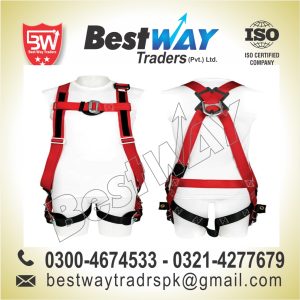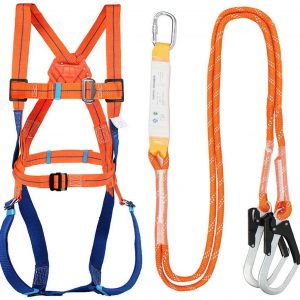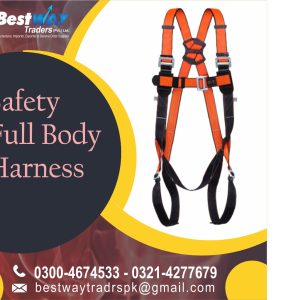Description
Proper fall protection is often the only thing standing between you and serious injury or death. For full safety, it’s critical to choose the right full body harnesses for yourself and your team. Understanding the design and use empowers you to make the right decisions when it comes to your fall protection gear. This equipment will guard against accidents, maintain your company’s OSHA compliance, and create a better workplace for everyone involved.
KEY TAKEAWAYS
- Learn about the different components of full body harnesses
- Discover which types of harnesses are right for different industries and uses
- Get tips for choosing a harness that fits and functions the way you need it to
- Find out how you should inspect your harness for maximum safety
TABLE OF CONTENTS
What is a Full Body Harness?
A full body harness is a safety harness that connects the worker to the fall protection system anchored into the structure they’re working on. Using a series of straps that fit around the thighs, hips, chest, shoulders, and back, these harnesses arrest falls while minimizing injury to the worker. Full body harnesses are also designed to keep wearers upright after a fall to prevent suspension trauma and facilitate faster rescue.
As you’ll see below, however, the harnesses recommended today haven’t always been the most common option. It took several decades to develop a full body option that doesn’t prolong the danger caused by a workplace fall.
Full Body Harness vs. Body Belt
Initially, fall protection systems relied on a single belt, usually made of leather or canvas and worn around the waist, to prevent falls. Though this did arrest some falls, it wasn’t always successful. And when it did work, it often created new dangers, including:
- Internal injuries or death from the impact and/or being suspended for too long
- Further injury if the worker slipped out of the belt
- Asphyxia if the belt shifted under the armpits
- Impacts, particularly to the head, if the wearer flipped upside down
In the 1970s and 1980s, workers began using two lanyards for additional safety. Known as a “100% tie-off system,” the second lanyard offered backup protection if anything happened to the first. It didn’t, however, prevent the hazards of using body belts. If you fell “correctly,” horizontally, you were often fine, but falling in any other position put you at serious risk.
Several safety organizations, including OSHA, tested body belts throughout the late 1900s. In one test performed by the British Standards Institute’s National Engineering Lab, the body belt folded the dummy in half, slamming its head against the surface below. In another study by OSHA, engineers determined that an average-sized woman could survive for 2.5 minutes while suspended in a body belt. The average-sized man would only last 32 seconds.
Though some companies used safety harnesses rather than just body belts as early as






Reviews
There are no reviews yet.